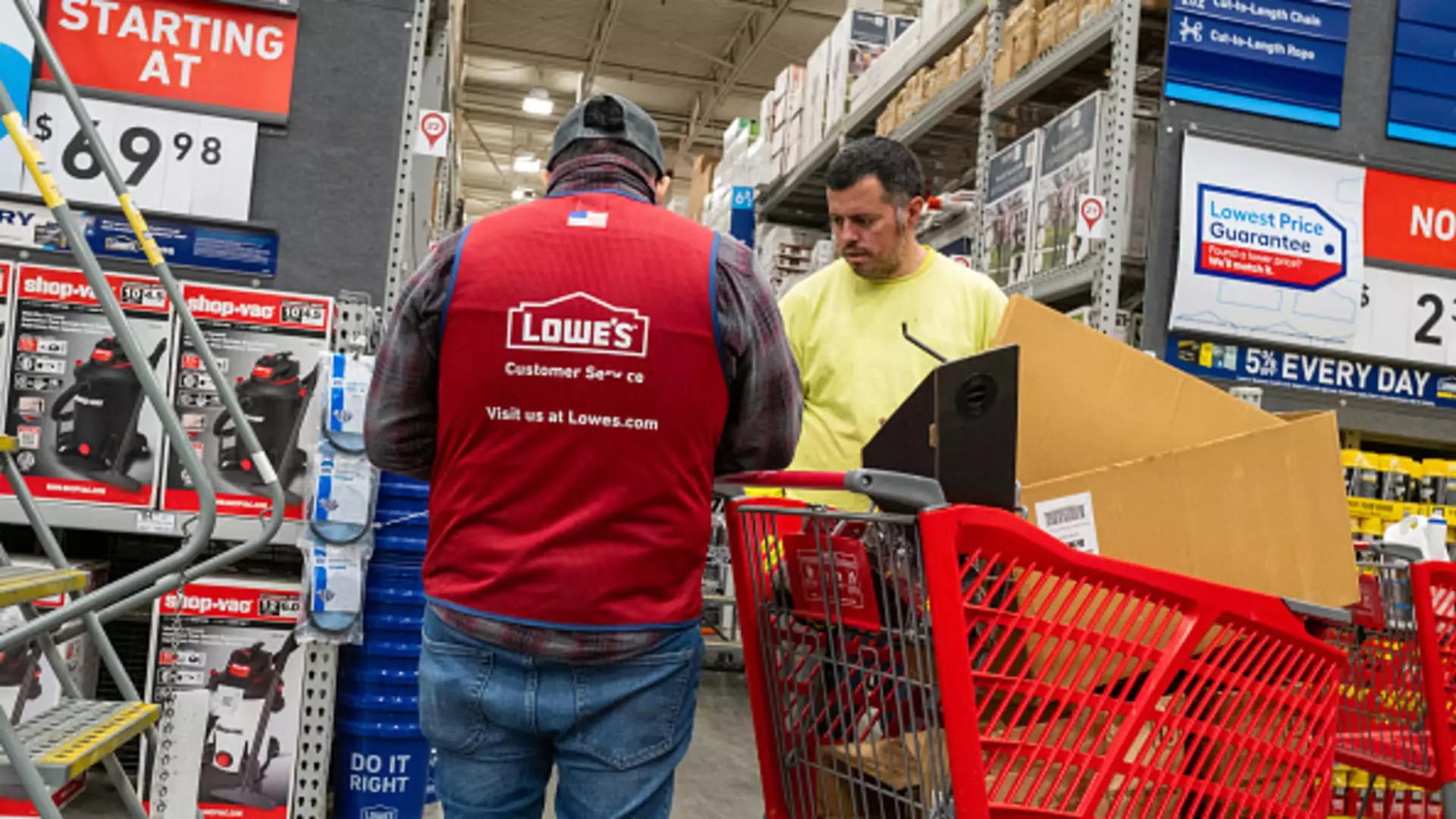Lowe’s recently announced a downward adjustment to its full-year forecast due to declining quarterly sales and projected weak home improvement spending in the latter half of the year. The company revised its total sales expectations to a range between $82.7 billion and $83.2 billion, down from the previously expected $84 billion to $85 billion. Similarly, comparable sales are now anticipated to decline by 3.5% to 4%, compared to the prior forecast of a 2% to 3% drop. Adjusted earnings per share projections were also revised downward to about $11.70 to $11.90, in contrast to the previous outlook of $12 to $12.30.
CEO Marvin Ellison attributed the subdued consumer spending to the anticipation of interest rate cuts by the Federal Reserve. He highlighted that customers are holding off on major purchases, including high-ticket home improvement projects, until interest rates decrease. The ambiguous economic environment, characterized by lingering inflation and economic pressures, has led to a sense of caution among consumers. Ellison pointed out that a substantial portion of Lowe’s clientele consists of homeowners with fixed 30-year mortgage rates below 4%, contributing to their reluctance to take on additional financial commitments amid uncertain economic conditions.
Financial Performance and Market Response
Despite the challenging economic landscape, Lowe’s reported adjusted earnings per share of $4.10, surpassing Wall Street’s expectations of $3.97. However, the company experienced a decline in net income to $2.38 billion, down from $2.67 billion in the previous year. Quarterly revenue of $23.59 billion fell short of analysts’ projections of $23.91 billion. Lowe’s attributed part of its earnings boost to a $43 million gain from the sale of its Canadian retail business. Yet, the company’s overall sales declined year-over-year for the sixth consecutive quarter, with comparable sales dropping by 5.1%. The decline was attributed to reduced discretionary spending on home projects and unfavorable weather conditions affecting outdoor and seasonal item sales.
Lowe’s quarterly results reflect broader concerns about consumer spending and economic health, as indicated by mixed signals in recent economic data. While unemployment figures disappointed, suggesting potential financial strain among households, other indicators such as Walmart’s positive outlook and Goldman Sachs’ reduced recession odds provide contrasting perspectives. Economic uncertainties, including higher mortgage rates and borrowing costs, pose challenges for home improvement retailers like Lowe’s. Rivalry with Home Depot, which recently outperformed market expectations, further intensifies the competitive landscape in the industry.
Future Outlook and Market Positioning
Despite the current economic headwinds, CEO Marvin Ellison remains optimistic about the long-term growth prospects of the home improvement sector. Factors such as aging housing stock, increasing household formation among millennials, and trends among Baby Boomers opting to renovate rather than relocate, are poised to drive industry growth. Ellison emphasized Lowe’s readiness to capitalize on market opportunities once consumer sentiment improves and home improvement activity picks up. Looking ahead, Lowe’s aims to leverage these industry trends to enhance its market position and gain a competitive edge.
Lowe’s faces challenges stemming from a cautious consumer environment and economic uncertainties, leading to revised forecasts and lower-than-expected financial performance. The company’s ability to navigate these challenges and capitalize on future growth opportunities will determine its success in the dynamic home improvement retail sector. By closely monitoring economic indicators, consumer behavior, and industry trends, Lowe’s can position itself strategically to thrive in a competitive market landscape characterized by fluctuating economic conditions.

